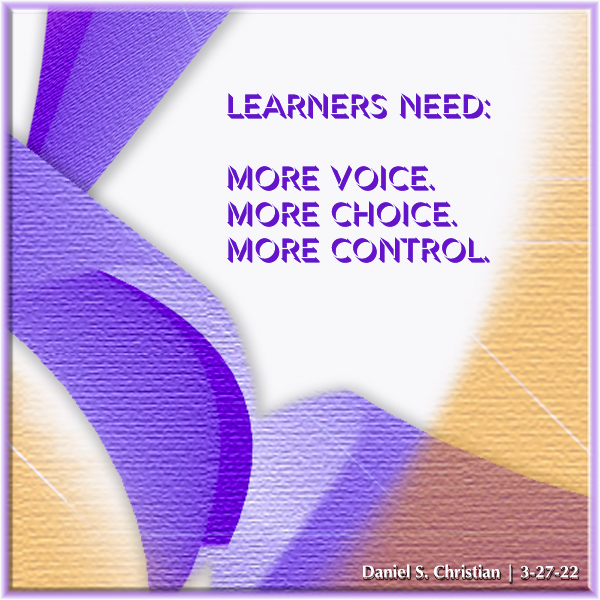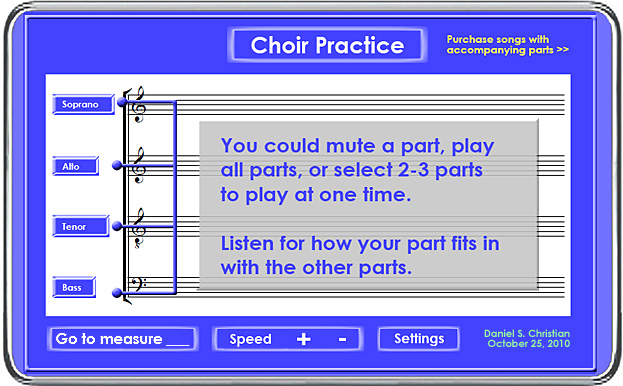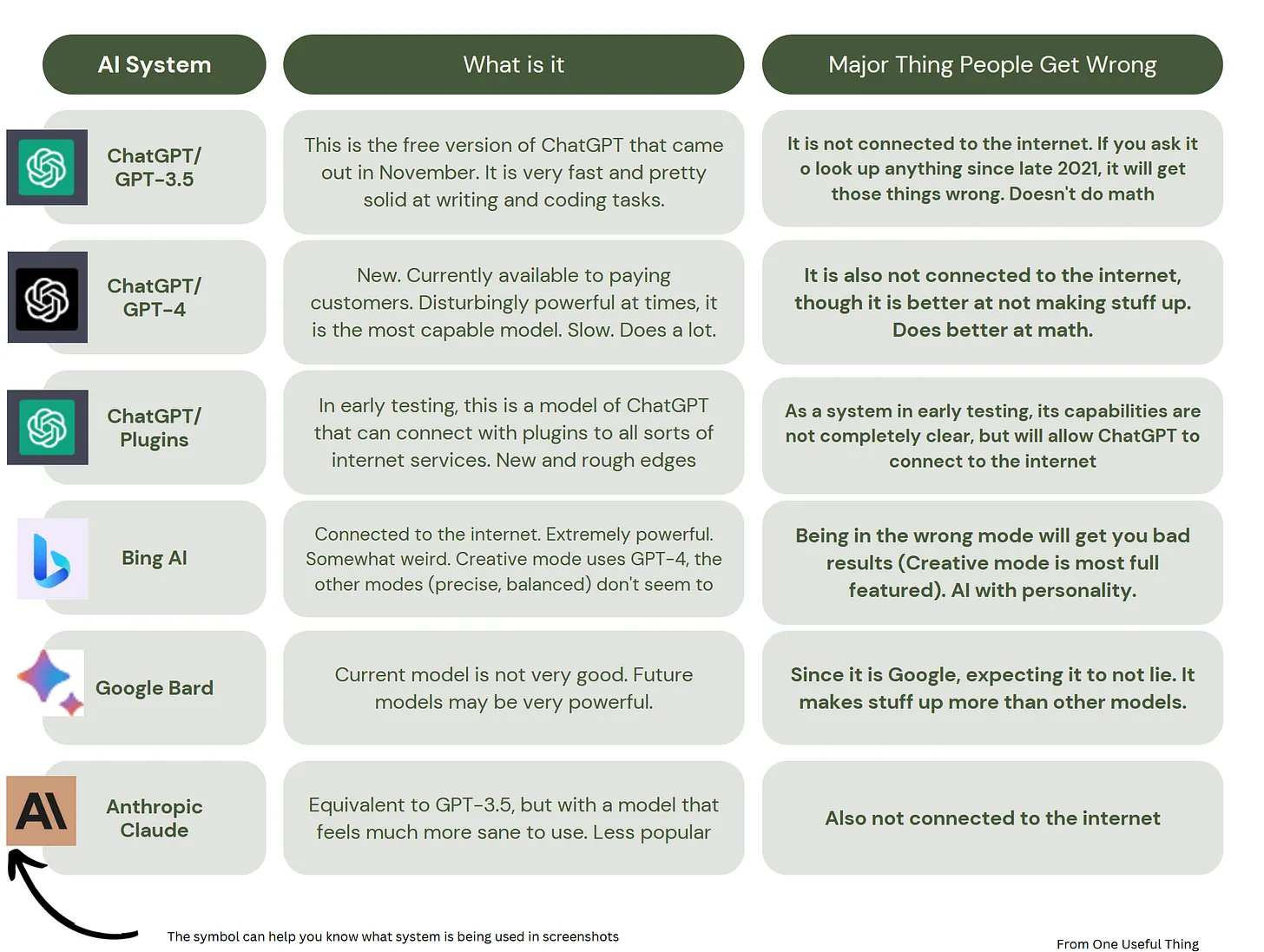20 essential considerations for educators who are developing policies around AI and ChatGPT [Miller]
What Is the Secret Sauce for Deeper Learning? — from cultofpedagogy.com by Jennifer Gonzalez
Excerpt:
One place that was a consistent source of deep learning was what Fine and Mehta referred to as “the periphery,” elective classes like art and robotics and extracurriculars like debate and athletics that are outside of what we consider to be the core academic classes. “Nobody talks very much about what’s going on in those spaces,” Fine says, “and yet they were the places where we saw the richest learning happening.” In these spaces, much of what they call the “grammar” of school is different: Students are there by choice, they have opportunities for apprenticeship and leadership, they can specialize in a subdomain of the field, and there’s usually a real product being produced for an authentic audience.
In the book, the authors used a school theater program as an example of this kind of learning at the periphery.

Also relevant/see:
Learning Designers will have to adapt or die. 10 ways to UPSKILL to AI…. — from donaldclarkplanb.blogspot.com by Donald Clark
From Ethan Mollick on LinkedIn:
Take a look at this simulated negotiation, with grading and feedback. Prompt: “I want to do deliberate practice about how to conduct negotiations. You will be my negotiation teacher. You will simulate a detailed scenario in which I have to engage in a negotiation. You will fill the role of one party, I will fill the role of the other. You will ask for my response to in each step of the scenario and wait until you receive it. After getting my response, you will give me details of what the other party does and says. You will grade my response and give me detailed feedback about what to do better using the science of negotiation. You will give me a harder scenario if I do well, and an easier one if I fail.”
Samples from Bing Creative mode and ChatGPT-4 (3.5, the free version, does not work as well)
I’m having a blast with ChatGPT – it’s testing ME! — from by Mark Mrohs
Using ChatGPT as an agent for asynchronous active learning
I have been experimenting with possible ways to incorporate interactions with ChatGPT into instruction. And I’m blown away. I want to show you some of what I’ve come up with.
The Secret to Great Learning Design? Focus on Problems, not Solutions — from drphilippahardman.substack.com by Dr. Philippa Hardman
What a recent resurgence of research into problem-based learning has taught us about the value & impact of problem-based approaches
Excerpts:
Problem-based learning is an instructional approach that engages students in active, collaborative, and self-directed learning by exploring complex, real-world problems (rather than sitting and listening to a stage on the stage).
In a Problem-based learning scenario, students work in small groups and, under the guidance of a facilitator or instructor, identify, research, and analyse a problem before proposing and evaluating potential solutions and reaching a resolution.
…
Here are five of the most interesting research projects published on problem-based learning in the last few months:
How to use AI to do practical stuff: A new guide — from oneusefulthing.substack.com by Ethan Mollick
People often ask me how to use AI. Here’s an overview with lots of links.
Excerpts:
We live in an era of practical AI, but many people haven’t yet experienced it, or, if they have, they might have wondered what the big deal is. Thus, this guide. It is a modified version of one I put out for my students earlier in the year, but a lot has changed. It is an overview of ways to get AI to do practical things.
…
I want to try to show you some of why AI is powerful, in ways both exciting and anxiety-producing.
Also see Ethan’s posting:
Power and Weirdness: How to Use Bing AI
Bing AI is a huge leap over ChatGPT, but you have to learn its quirks
Teaching: What You Can Learn From Students About ChatGPT — from chronicle.com by Beth McMurtrie
Excerpts (emphasis DSC):
Like a lot of you, I have been wondering how students are reacting to the rapid launch of generative AI tools. And I wanted to point you to creative ways in which professors and teaching experts have helped involve them in research and policymaking.
At Kalamazoo College, Autumn Hostetter, a psychology professor, and six of her students surveyed faculty members and students to determine whether they could detect an AI-written essay, and what they thought of the ethics of using various AI tools in writing. You can read their research paper here.
…
Next, participants were asked about a range of scenarios, such as using Grammarly, using AI to make an outline for a paper, using AI to write a section of a paper, looking up a concept on Google and copying it directly into a paper, and using AI to write an entire paper. As expected, commonly used tools like Grammarly were considered the most ethical, while writing a paper entirely with AI was considered the least. But researchers found variation in how people approached the in-between scenarios. Perhaps most interesting: Students and faculty members shared very similar views with each scenario.
Also relevant/see:
This Was Written By a Human: A Real Educator’s Thoughts on Teaching in the Age of ChatGPT — from er.educause.edu educause.org by Jered Borup
The well-founded concerns surrounding ChatGPT shouldn’t distract us from considering how it might be useful.
From DSC:
After seeing this…
“Make me an app”—just talk to your @Replit app to make software pic.twitter.com/U1v5m5Un1U
— Amjad Masad ? (@amasad) March 24, 2023
…I wondered:
- Could GPT-4 create the “Choir Practice” app mentioned below?
(Choir Practice was an idea for an app for people who want to rehearse their parts at home) - Could GPT-4 be used to extract audio/parts from a musical score and post the parts separately for people to download/practice their individual parts?
This line of thought reminded me of this posting that I did back on 10/27/2010 entitled, “For those institutions (or individuals) who might want to make a few million.”

And I want to say that when I went back to look at this posting, I was a bit ashamed of myself. I’d like to apologize for the times when I’ve been too excited about something and exaggerated/hyped an idea up on this Learning Ecosystems blog. For example, I used the words millions of dollars in the title…and that probably wouldn’t be the case these days. (But with inflation being what it is, heh…who knows!? Maybe I shouldn’t be too hard on myself.) I just had choirs in mind when I posted the idea…and there aren’t as many choirs around these days. 🙂
a big deal: @elonmusk, Y. Bengio, S. Russell, ??@tegmark?, V. Kraknova, P. Maes, ?@Grady_Booch, ?@AndrewYang?, ?@tristanharris? & over 1,000 others, including me, have called for a temporary pause on training systems exceeding GPT-4 https://t.co/PJ5YFu0xm9
— Gary Marcus (@GaryMarcus) March 29, 2023
The above Tweet links to:
Pause Giant AI Experiments: An Open Letter — from futureoflife.org
We call on all AI labs to immediately pause for at least 6 months the training of AI systems more powerful than GPT-4.
Elon Musk, Steve Wozniak and dozens of top scientists concerned about the technology moving too fast have signed an open letter asking companies to pull back on artificial intelligence. @trevorlault reports on the new A.I. plea. pic.twitter.com/Vu9QlKfV8C
— Good Morning America (@GMA) March 30, 2023
However, the letter has since received heavy backlash, as there seems to be no verification in signing it. Yann LeCun from Meta denied signing the letter and completely disagreed with the premise. (source)
Nope.
I did not sign this letter.
I disagree with its premise. https://t.co/DoXwIZDcOx— Yann LeCun (@ylecun) March 29, 2023
In Sudden Alarm, Tech Doyens Call for a Pause on ChatGPT — from wired.com by Will Knight (behind paywall)
Tech luminaries, renowned scientists, and Elon Musk warn of an “out-of-control race” to develop and deploy ever-more-powerful AI systems.
1/The call for a 6 month moratorium on making AI progress beyond GPT-4 is a terrible idea.
I'm seeing many new applications in education, healthcare, food, … that'll help many people. Improving GPT-4 will help. Lets balance the huge value AI is creating vs. realistic risks.
— Andrew Ng (@AndrewYNg) March 29, 2023
ChatGPT: Student insights are necessary to help universities plan for the future — from theconversation.com by Alpha Abebe and Fenella Amarasinghe
Excerpt:
In the race to get ahead of new technologies, are we forgetting about the perspectives of the most important stakeholders within our post-secondary institutions: the students?
Leaving students out of early discussions and decision-making processes is almost always a recipe for ill-fitting, ineffective and/or damaging approaches. The mantra “nothing for us without us” comes to mind here.
To help new students adapt, some colleges are eliminating grades — from npr.org by Jon Marcus
Excerpt (emphasis DSC):
Experiences like these are among the reasons behind a growing movement to stop assigning conventional A through F letter grades to first-year college students and, sometimes, upperclassmen.
Called “un-grading,” the idea is meant to ease the transition to higher education — especially for freshmen who are the first in their families to go to college or who weren’t well prepared for college-level work in high school and need more time to master it.
But advocates say the most important reason to adopt un-grading is that students have become so preoccupied with grades, they aren’t actually learning.
From DSC:
While I continue to try and review/pulse-check the K12 learning ecosystem, it struck me that we need new, DIRECT communication channels between educators, support staff, administrators, and legislators — and possibly others.
That is:
- How can teachers, support staff, and administrators talk directly to legislators?
- How can legislators communicate with teachers, support staff, and administrators?
- Should we require relevant legislators (i.e., those individuals sponsoring bills or major changes to our k12 learning ecosystem) to go through training on how students learn?
- What communication vehicles are present? Can they be anonymous?
- Should there be an idea 1-800 hotline or an idea “mailbox” (digital and/or analog based)?
And what about the students themselves and/or their parents/guardians? Should they be involved as well?
A Spotify model of personalised higher education — from timeshighereducation.com by Michael Rosemann and Martin Betts
With technology offering greater potential for a personalised approach to higher education, Michael Rosemann and Martin Betts look at what universities can learn from the ubiquitous music platform Spotify
Excerpts (emphasis DSC):
Selection, or the P(upil)-route as educationalist Dan Buckley calls it, means personalisation driven by the learner. This is the fastest-moving form of personalised learning. Not only do students benefit from true omnichannel education – choosing between face to face and online – they also independently navigate the internet’s resources and online databases in search of the knowledge that will help them to achieve their learning targets.
…
Automation, or the A-route, is the new enabler of personalised learning. As with personalised medicine, finance or entertainment, education is starting to use digital technologies to unlock new models of tailored engagement. While for most universities, AI-driven, personalised education is not an option as the required capabilities are missing and significant investments would be necessary, there is a range of alternative forms of automated personalised learning. For this, we look to providers outside the sector for inspiration.
Here are Spotify-inspired ideas that universities ambitious enough to provide personalised learning could explore.
From DSC:
Rosemann & Betts use the term “omnichannel education” — I like that term. Very nice.
We Can’t Keep ChatGPT Out of the Classroom, so Let’s Address the ‘Why’ Behind Our Fears — from edsurge.com by Alice Domínguez
Excerpt:
ChatGPT offers us an opportunity to address our fears, release our fixation on preventing cheating and focus our attention on more worthy priorities: providing students with compelling reasons to write, inviting them to wrestle with important questions and crafting a piece of writing that cannot be mistaken for a robot’s work.
Using AI to Help Organize Lesson Plans — from edutopia.org by Jorge Valenzuela
Artificial intelligence tools like ChatGPT can help educators find activities that are set up to teach designated skills.
Excerpt:
- My middle school students have to write a personal narrative about their experience with leadership and service. Which two or three specific Common Core State Standards are relevant to this task?
- Now rewrite those standards into three to four “I can” statements. Although the chatbot can give you a great starting point, you may need to reword these into learning goals better suited for your students.
- What formative assessments (formal and informal) can I use to check my students’ understanding of these standards?
- Given your “I can” statements, what lessons can I teach to help my students write their best personal narratives?
- Which high-yielding strategies can I use to teach these lessons? I aim to engage all my learners in tandem with increasing academic achievement.
- You mentioned using “differentiated instruction.” What methods can I use to support my English language learners to improve their narratives?
- Please provide the sources you used for your responses with websites.
10 Powerful Ways to End Your Lessons — from edutopia.org by Andrew Boryga
Instead of cleaning up or going over homework assignments, try these creative activities that can help students make sense of new material—and have fun in the process.
Excerpts:
4. Create News “Headlines” or “Six-word Summaries”: Pair students off and tell them to imagine they’re writing news headlines that summarize what they’ve learned. Challenge each pair to write at least two headlines, then come back together to review the headlines. Alternatively, you can do this as an entire class activity, writing the headlines suggested by students on your whiteboard.
…
5. Traffic Light: …Before students leave the room, they take sticky notes and write one thing they learned in the lesson and place it on the green light, one thing they’re still mulling over and place it on yellow light, and one thing they’re struggling to understand and place it on the red light.
2 Ways to Encourage Better Note-Taking — from edutopia.org by Marianna Ruggerio
Do your high school students think that taking notes during class means writing down everything you say? You can teach them effective note-taking skills that increase their engagement.
Distance Learning Strategies to Bring Back to the Classroom — from edutopia.org by Sarah Cooper
When schools closed, teachers were forced to get creative—and they’ve learned things they can use when they’re back at school.










